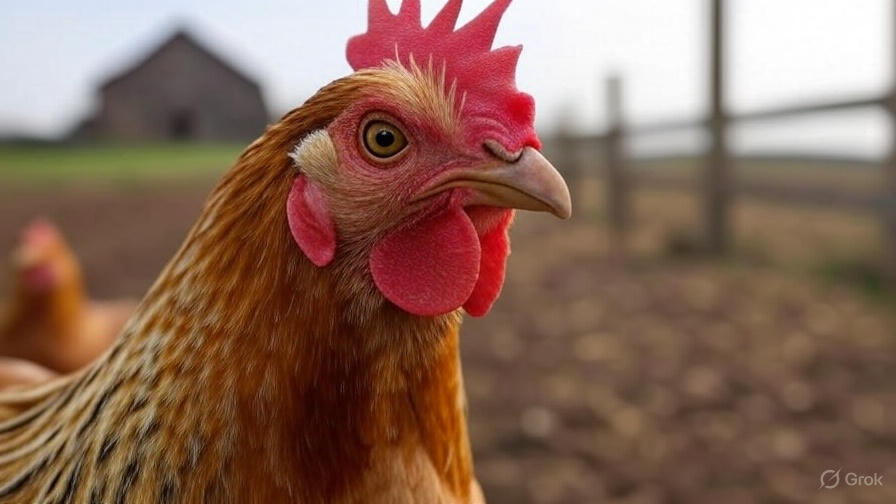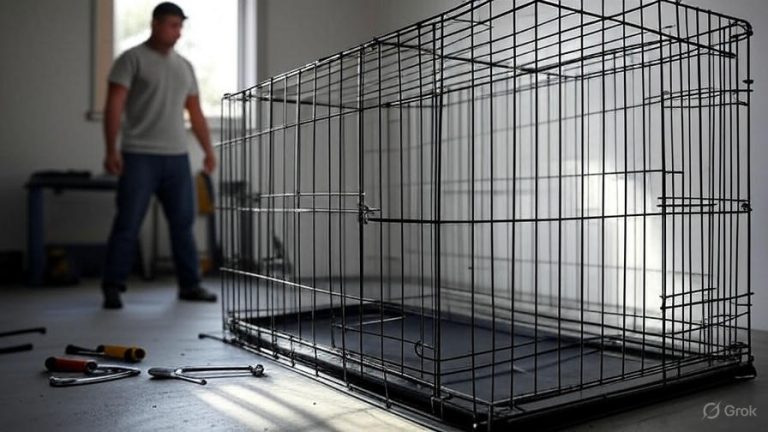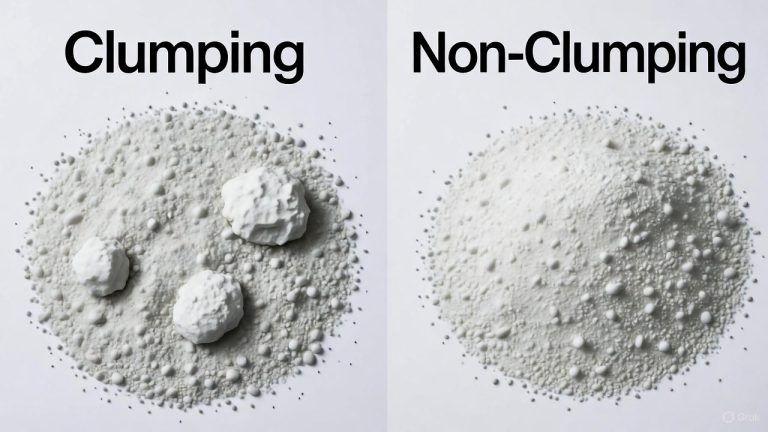How to Tell if Chickens Have Worms?
Chicken owners face many health challenges when raising their flocks, and intestinal parasites rank among the most common problems. Worms affect chickens of all ages and can seriously impact their health, egg production, and overall well-being. Recognizing the early signs of worm infestations helps you take quick action to protect your birds and maintain a healthy flock.
Common Types of Worms That Affect Chickens
Backyard chickens can contract several different types of internal parasites. Roundworms represent the most frequently encountered worm species in domestic poultry. These parasites live in the intestinal tract and can grow up to several inches long. Chickens typically pick up roundworm eggs from contaminated soil, feed, or water sources.
Tapeworms also pose a significant threat to chicken health. These flat, segmented parasites attach themselves to the intestinal wall and absorb nutrients directly from your birds. Chickens usually become infected with tapeworms after eating intermediate hosts like beetles, flies, or earthworms that carry the parasite larvae.
Cecal worms target the cecal pouches in a chicken’s digestive system. While these parasites often cause minimal direct damage, they can carry Blackhead disease, which proves fatal to chickens and turkeys. The transmission occurs when birds consume contaminated droppings or soil.
Capillary worms, also known as hairworms, affect the crop and upper digestive tract. These thin parasites cause inflammation and can interfere with normal digestion processes. Earthworms serve as intermediate hosts for capillary worms, making free-range chickens particularly susceptible to infection.
Physical Signs Your Chickens Have Worms
Observing your chickens regularly allows you to spot potential worm problems before they become severe. Weight loss often signals the first noticeable symptom of a worm infestation. Infected birds may eat normally or even increase their food consumption, yet they continue losing weight as parasites steal vital nutrients.
Pale combs and wattles indicate anemia, which commonly develops in chickens with heavy worm burdens. Healthy chickens display bright red combs and wattles, so any color changes warrant immediate attention. The anemia results from internal bleeding caused by worms damaging the intestinal lining.
Diarrhea or changes in droppings consistency frequently accompany worm infestations. Normal chicken droppings should appear firm with a white urate cap. Watery, bloody, or unusually colored droppings suggest digestive problems that may stem from parasitic infections.
Visible worms in droppings provide the most definitive evidence of an infestation. Roundworms appear as long, white, spaghetti-like strands in fresh droppings. Tapeworm segments look like small, flat, rice-like pieces. However, the absence of visible worms doesn’t guarantee your chickens are parasite-free, as many worms remain inside the digestive tract.
Feather quality deteriorates in chickens suffering from worm infestations. Infected birds often develop dull, ruffled, or broken feathers as their bodies redirect nutrients away from feather production to fight the parasitic infection.
Behavioral Changes That Signal Worm Problems
Chickens with worm infestations display distinct behavioral changes that alert observant owners to potential health issues. Lethargy ranks among the most common behavioral symptoms. Infected birds spend more time sitting or lying down and show less interest in normal activities like foraging, dust bathing, or socializing with flock mates.
Reduced appetite or changes in eating patterns often develop as worm infestations progress. Some chickens may pick at their food without consuming adequate amounts, while others might eat voraciously yet fail to gain weight. These eating pattern changes reflect the competition for nutrients between the chicken and its parasitic burden.
Decreased activity levels become apparent when chickens stop participating in their usual routines. Healthy chickens actively explore their environment, scratch for insects, and engage with other flock members. Infected birds tend to isolate themselves and avoid physical exertion.
Social behavior modifications also occur in chickens with worm problems. Infected birds may become aggressive toward flock mates or, conversely, withdraw from the group entirely. These personality changes often reflect the discomfort and stress caused by the parasitic infection.
Impact on Egg Production and Quality
Worm infestations significantly affect egg-laying performance in hens. Production drops represent one of the earliest indicators of parasitic problems in laying flocks. Hens with worm burdens may reduce their laying frequency or stop producing eggs entirely as their bodies prioritize fighting the infection over reproduction.
Egg quality suffers when hens carry heavy worm loads. Shell thickness may decrease, making eggs more prone to cracking during handling or incubation. The shells might also develop an unusual texture or appearance, including rough surfaces or abnormal coloration.
Egg size variations often occur in infected hens. The eggs may become smaller than normal as the hen’s body struggles to allocate sufficient nutrients for proper egg development. Some hens produce eggs with unusually thin whites or pale yolks, indicating nutritional deficiencies caused by parasitic competition.
Internal egg quality can also decline in hens with worm infestations. The nutritional content may decrease, and the eggs might develop off-flavors or odors. These quality issues affect both table eggs and those intended for hatching.
Digestive System Warning Signs
The digestive system bears the brunt of worm damage, and several specific symptoms point to parasitic infections. Crop impaction occurs when worms interfere with normal food passage through the digestive tract. Affected chickens develop a hard, enlarged crop that fails to empty overnight.
Sour crop, a condition where food ferments in the crop instead of passing to the stomach, can result from worm-related digestive disruptions. Chickens with sour crop often have bad breath and may regurgitate partially digested food.
Vent prolapse sometimes develops in chickens with severe worm infestations. The constant straining caused by digestive irritation can cause the vent tissues to protrude outside the body. This serious condition requires immediate veterinary attention.
Abnormal droppings consistency provides important clues about internal parasite burdens. Foamy droppings may indicate capillary worm infections, while bloody droppings often signal cecal worm problems or intestinal damage from other parasites.

Risk Factors That Increase Worm Infections
Several environmental and management factors increase the likelihood of worm infestations in chicken flocks. Overcrowding creates ideal conditions for parasite transmission as chickens have increased contact with contaminated droppings and soil. Dense populations also stress birds, weakening their immune systems and making them more susceptible to infections.
Poor sanitation practices allow worm eggs and larvae to accumulate in the chicken environment. Infrequent coop cleaning, inadequate waste removal, and contaminated water sources all contribute to higher infection rates. Wet, muddy conditions particularly favor parasite survival and development.
Free-range chickens face higher exposure risks than confined birds because they encounter more potential sources of infection. While free-ranging offers many benefits, the increased access to contaminated soil, wild bird droppings, and intermediate hosts raises the chances of picking up parasites.
Stress factors like sudden diet changes, extreme weather, predator pressure, or flock disruptions can compromise chicken immune systems. Stressed birds become more vulnerable to worm infections and may develop heavier parasite burdens than healthy, unstressed chickens.
Young chickens and older birds show increased susceptibility to worm infections. Chicks lack fully developed immune systems, while aging hens may have declining immune function. Both age groups require extra monitoring for signs of parasitic problems.
Diagnostic Methods and Professional Testing
Accurate diagnosis of worm infections requires more than visual observation of symptoms. Fecal examinations performed by veterinarians or experienced poultry keepers provide the most reliable method for detecting internal parasites. Fresh droppings samples undergo microscopic examination to identify worm eggs, which appear different for each parasite species.
Fecal flotation tests use special solutions to separate parasite eggs from other fecal matter. This technique increases the visibility of eggs under microscopic examination and helps identify mixed infections involving multiple worm species. The process requires collecting fresh droppings samples and examining them within a few hours for best results.
Direct fecal smears offer a quick diagnostic method that can be performed on-farm. A small amount of fresh droppings gets mixed with water on a microscope slide and examined for moving parasites or eggs. While less sensitive than flotation methods, direct smears can detect heavy infections.
Professional veterinary diagnosis provides the most comprehensive assessment of worm problems. Veterinarians can identify specific parasite species, estimate infection severity, and recommend appropriate treatment protocols. They may also perform additional tests to assess overall chicken health and rule out other conditions with similar symptoms.
Prevention Strategies for Worm Control
Implementing effective prevention strategies helps reduce worm infection risks and maintains flock health. Regular coop cleaning removes parasite eggs before they can mature and infect chickens. Daily removal of droppings, weekly deep cleaning of bedding, and monthly sanitization of surfaces all contribute to parasite control.
Pasture rotation breaks the parasite life cycle by moving chickens away from contaminated areas. Allowing pastures to rest for several weeks kills parasite eggs and larvae that cannot survive without host chickens. This management practice works particularly well for free-range flocks with adequate space.
Water system maintenance prevents contamination that can spread parasites throughout the flock. Clean, fresh water sources reduce infection risks and support overall chicken health. Automatic waterers should be cleaned regularly, and standing water should be eliminated from the chicken area.
Quarantine procedures for new birds protect established flocks from introducing parasites. New chickens should be isolated for at least two weeks and examined for signs of worm infections before joining the main flock. This practice prevents the spread of parasites from infected newcomers.
Natural and Chemical Treatment Options
Various treatment approaches exist for managing worm infections in chickens. Chemical dewormers provide fast, effective treatment for severe infestations. Fenbendazole, levamisole, and piperazine represent commonly used medications that target different worm species. These products require careful dosing and observation of withdrawal periods for eggs and meat.
Natural remedies offer gentler alternatives for minor infections or as preventive measures. Diatomaceous earth, when fed in small amounts, may help control internal parasites through mechanical action. Pumpkin seeds contain compounds that can help expel certain types of worms from the digestive system.
Herbal treatments like garlic, oregano, and thyme possess natural antiparasitic properties. These herbs can be added to chicken feed or water as part of a holistic health management program. While natural remedies may support overall health, they typically work more slowly than chemical treatments.
Probiotic supplements help restore healthy gut bacteria after worm infections or chemical treatments. These beneficial bacteria compete with parasites for nutrients and attachment sites, potentially reducing infection severity and recurrence rates.
Monitoring and Long-term Management
Successful worm control requires ongoing monitoring and management rather than one-time treatments. Regular fecal examinations, performed every 3-6 months, help detect new infections before they become severe. This proactive approach allows for early intervention and prevents the development of drug-resistant parasite populations.
Record keeping tracks treatment history, infection patterns, and flock health trends over time. Detailed records help identify seasonal patterns, high-risk periods, and the effectiveness of different management strategies. This information guides future prevention and treatment decisions.
Environmental management continues to play a crucial role in long-term worm control. Regular assessment of housing conditions, pasture quality, and sanitation practices helps identify areas for improvement. Small changes in management can significantly impact parasite pressure and flock health.
Flock health monitoring extends beyond worm detection to include overall wellness indicators. Regular weight checks, egg production records, and behavioral observations provide early warning signs of health problems. Healthy, well-managed flocks show greater resistance to worm infections and recover more quickly from parasitic challenges.
Recognizing the signs of worm infestations in chickens empowers poultry owners to protect their flocks and maintain optimal bird health. Early detection combined with appropriate treatment and prevention strategies creates the foundation for successful parasite management. Regular monitoring, good sanitation practices, and professional veterinary support when needed ensure your chickens remain healthy, productive, and free from the negative effects of internal parasites.
Remember that preventing worm infections proves more effective and economical than treating established infestations. By implementing comprehensive management strategies and staying alert to the warning signs discussed in this guide, you can keep your chickens healthy and your egg production strong throughout the year.







